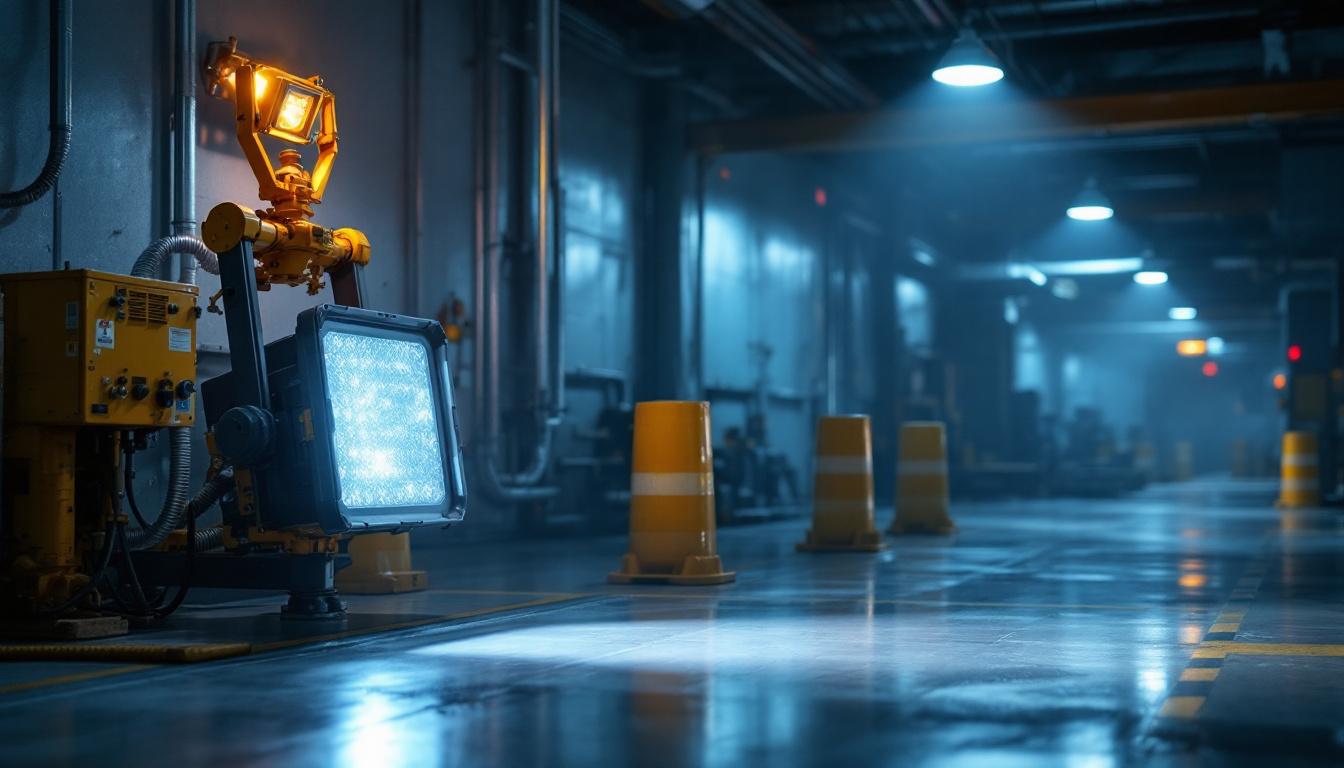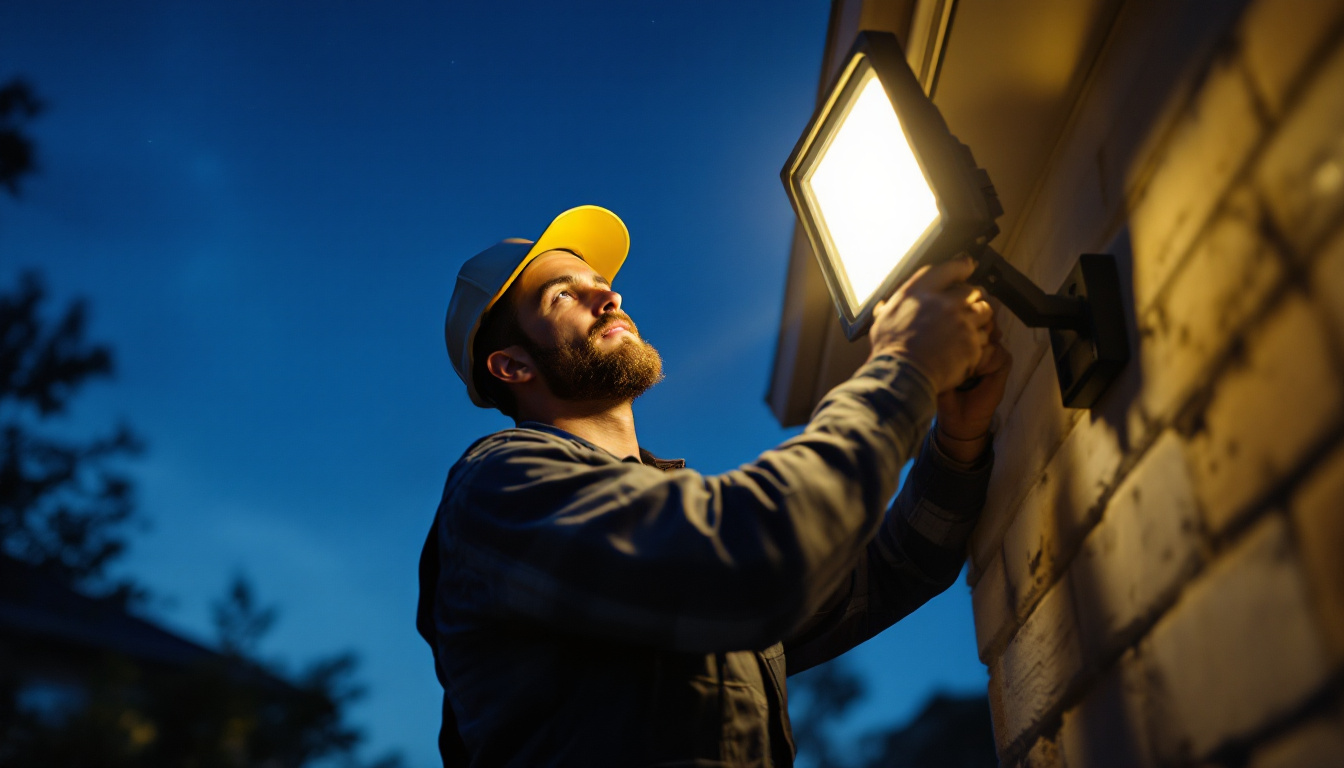
As the demand for security solutions continues to rise, exterior motion detector alarms have become an essential component in residential and commercial properties. Lighting contractors often find themselves at the forefront of these installations, leading to a variety of questions regarding the best practices, technology, and integration of these systems. This article addresses common inquiries from lighting contractors, providing insights into the effective use of exterior motion detector alarms.
Motion detectors utilize various technologies to identify movement within a designated area. The most common types include passive infrared (PIR), microwave, and dual technology sensors. PIR sensors detect heat emitted by objects, typically human bodies, while microwave sensors use radio waves to sense motion. Dual technology sensors combine both methods for enhanced accuracy, reducing false alarms. These sensors can be strategically placed in various locations, such as entryways, hallways, and outdoor perimeters, to maximize their effectiveness in monitoring activity.
When a motion detector is triggered, it sends a signal to the alarm system, which can activate lights, sirens, or notifications to a security service. Understanding these technologies is crucial for contractors, as it influences the choice of equipment and installation strategies. Moreover, the placement of these detectors is equally important; for instance, positioning them at an optimal height and angle can significantly enhance their detection capabilities. Factors such as the layout of the space, potential obstructions, and environmental conditions must all be taken into account to ensure reliable performance.
When selecting motion detectors for exterior use, several features should be considered. sensitivity settings allow for customization based on the specific environment, helping to minimize false alarms caused by pets or passing vehicles. Adjustable detection ranges enable contractors to tailor the coverage area, ensuring optimal performance. Some models even include features like pet immunity, which can distinguish between human and animal movement, further reducing unnecessary alerts.
Additionally, weather resistance is vital for outdoor installations. Look for models with an appropriate IP rating to ensure durability against rain, snow, and extreme temperatures. Some advanced models also offer smart technology integration, allowing for remote monitoring and control through mobile applications. This feature not only enhances convenience but also provides users with real-time alerts and the ability to review footage or activity logs from their devices. Furthermore, energy efficiency is becoming a significant consideration, with many modern motion detectors designed to consume less power while maintaining high performance, making them a sustainable choice for both residential and commercial applications.
Proper placement of motion detectors is critical for effective operation. Ideally, these devices should be installed at a height of 6 to 8 feet to maximize their field of view. Positioning them in corners or elevated locations can help cover larger areas while minimizing blind spots. Additionally, consider the angle of detection; most motion detectors have a cone-shaped field of view, so angling them slightly downward can enhance their ability to detect movement at ground level.
Contractors should also consider the surrounding environment. Avoid placing detectors near trees or shrubs that may trigger false alarms due to movement from wind or wildlife. Instead, focus on areas that require security, such as entry points, driveways, and pathways. It’s also beneficial to install motion detectors in locations where they can be easily accessed for maintenance and adjustments, ensuring they remain functional and effective over time. Moreover, incorporating multiple detectors can create overlapping fields of view, providing comprehensive coverage and reducing the likelihood of any gaps in security.
Wiring is a fundamental aspect of motion detector installation. Contractors must ensure that the wiring is suitable for outdoor use, typically using weather-resistant cables. It’s also essential to adhere to local electrical codes and regulations during installation. Using conduit can protect the wiring from environmental damage, and proper grounding is necessary to prevent electrical surges that could damage the system.
For wireless systems, although wiring may not be a concern, ensuring that the devices are within range of the receiver is crucial. Signal interference from walls or large objects can affect performance, so testing the system before finalizing the installation is advisable. Additionally, consider the battery life of wireless detectors; regular checks and replacements are necessary to maintain functionality. Some advanced systems offer notifications when battery levels are low, allowing for proactive maintenance. Furthermore, integrating motion detectors with other security systems, such as alarms and cameras, can enhance overall security measures and provide a more comprehensive approach to monitoring your property.
Integrating motion detectors with outdoor lighting systems can significantly improve security and convenience. When a motion detector is triggered, it can automatically activate lights, illuminating pathways and entryways. This not only deters potential intruders but also provides safety for homeowners and visitors.
Contractors should consider using LED lighting for these installations, as they are energy-efficient and have a longer lifespan compared to traditional bulbs. Additionally, dimmable LED fixtures can enhance the ambiance while still providing adequate illumination when motion is detected.
Smart technology has revolutionized the way motion detectors and lighting systems operate. By integrating these devices with smart home systems, homeowners can control their security settings remotely. This includes adjusting sensitivity levels, setting schedules, and receiving alerts on their smartphones.
Moreover, smart motion detectors can provide valuable data analytics, such as tracking movement patterns. This information can help homeowners understand their security needs better and make informed decisions about their lighting and alarm systems.
Regular maintenance is essential for ensuring the longevity and effectiveness of motion detectors. Contractors should recommend periodic cleaning of the sensor lenses to remove dust and debris that may obstruct their functionality. Additionally, it’s advisable to check the alignment of the detectors, as shifting due to weather or other factors can affect their performance.
Battery-operated models require battery replacements, and contractors should inform clients of the signs indicating low battery levels, such as reduced sensitivity or inconsistent performance. Regular checks can prevent unexpected failures and ensure continuous security coverage.
Contractors may encounter common issues such as false alarms or non-responsiveness. False alarms can often be resolved by adjusting the sensitivity settings or repositioning the detector to minimize interference from environmental factors. In cases of non-responsiveness, checking the power supply and ensuring proper wiring connections can often resolve the issue.
For more complex problems, consulting the manufacturer’s troubleshooting guide or seeking professional support may be necessary. Keeping a record of common issues and solutions can also aid in future installations and maintenance tasks.
The cost of motion detector alarms can vary widely based on features, brand, and installation complexity. Basic models may start at a lower price point, while advanced systems with smart technology and enhanced features can be significantly more expensive. Contractors should provide clients with a range of options to fit different budgets.
In addition to the cost of the devices themselves, installation expenses should also be considered. Factors such as wiring, labor, and any additional equipment needed can influence the overall project cost. Providing a detailed estimate can help clients understand the investment required for a comprehensive security solution.
To maximize their investment in motion detector alarms, clients should be educated on the importance of proper installation and maintenance. Contractors can offer guidance on selecting the right products for their specific needs, ensuring that clients receive optimal performance from their systems.
Additionally, encouraging clients to consider the integration of motion detectors with other security measures, such as cameras and alarms, can enhance overall security. A holistic approach to security not only provides peace of mind but also ensures that clients feel their investment is worthwhile.
The field of motion detection technology is continually evolving, with innovations aimed at improving accuracy, efficiency, and user experience. One emerging trend is the integration of artificial intelligence (AI) into motion detection systems. AI can help differentiate between human and non-human movement, significantly reducing false alarms.
Furthermore, advancements in energy efficiency are leading to the development of solar-powered motion detectors. These eco-friendly options not only reduce energy costs but also provide flexibility in installation locations, as they do not rely on traditional power sources.
As smart home technology continues to advance, the integration of motion detectors with other smart devices is expected to become more seamless. Future systems may feature enhanced interoperability, allowing for more sophisticated automation scenarios. For instance, motion detectors could work in tandem with smart thermostats to adjust heating or cooling based on occupancy.
Moreover, improvements in user interfaces and mobile applications will likely make it easier for homeowners to manage their security systems. Simplified controls and enhanced data analytics will empower users to make informed decisions about their home security.
Exterior motion detector alarms are a crucial element in modern security systems, and lighting contractors play a vital role in their successful installation and integration. By understanding the technology, installation best practices, and maintenance requirements, contractors can provide valuable solutions to their clients.
As the industry continues to evolve, staying informed about innovations and trends will ensure that contractors remain competitive and can offer the best possible service. By addressing common questions and concerns, lighting contractors can enhance their expertise and build trust with their clients, ultimately leading to successful projects and satisfied customers.
Ready to elevate your lighting installations with the best in exterior motion detector alarms? Look no further than LumenWholesale, where we provide lighting contractors with the highest quality, spec-grade lighting products at unbeatable wholesale prices. Say goodbye to local distributor markups and hello to superior products that meet the highest industry standards. With our hassle-free bulk buying and free shipping, you can ensure your projects shine with reliability and performance, all while keeping your costs down. Don’t compromise on quality or value; choose LumenWholesale for the perfect blend of affordability and convenience. Wholesale Lighting at the Best Value is just a click away.

Explore innovative strategies from expert lighting contractors on enhancing outdoor spaces with dusk till dawn lighting solutions.

Discover the essentials of hazardous area lighting, including safety standards, types of lighting solutions, and installation tips.

Discover the top strategies lighting contractors use to optimize 120V security flood lights for enhanced safety and efficiency.

Discover the key essentials of bulb bases that every lighting contractor needs to know.